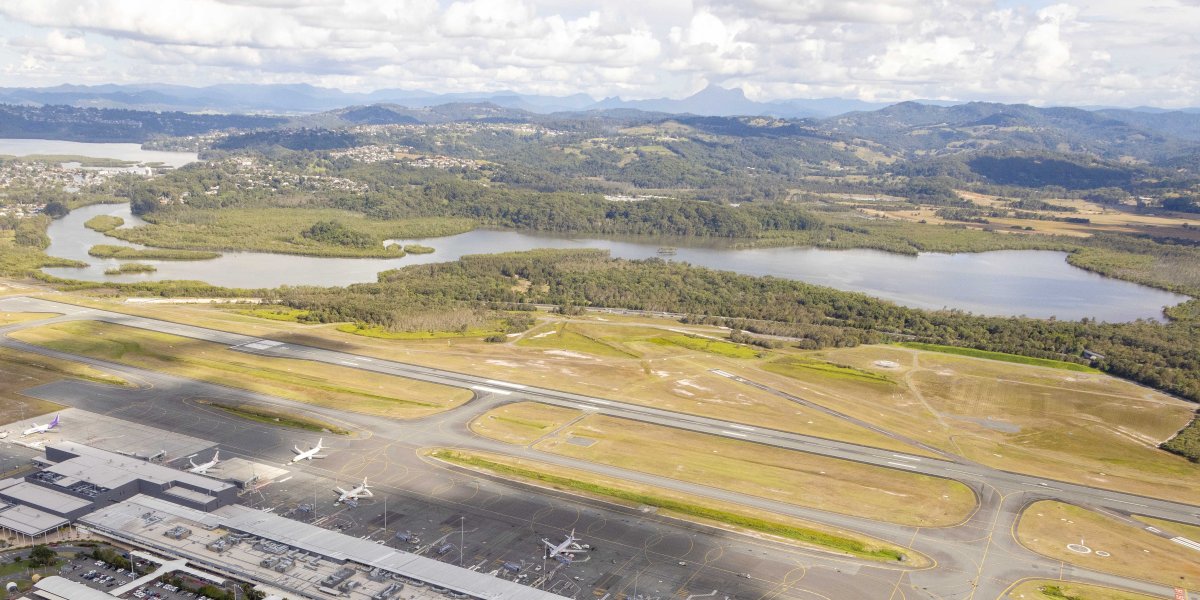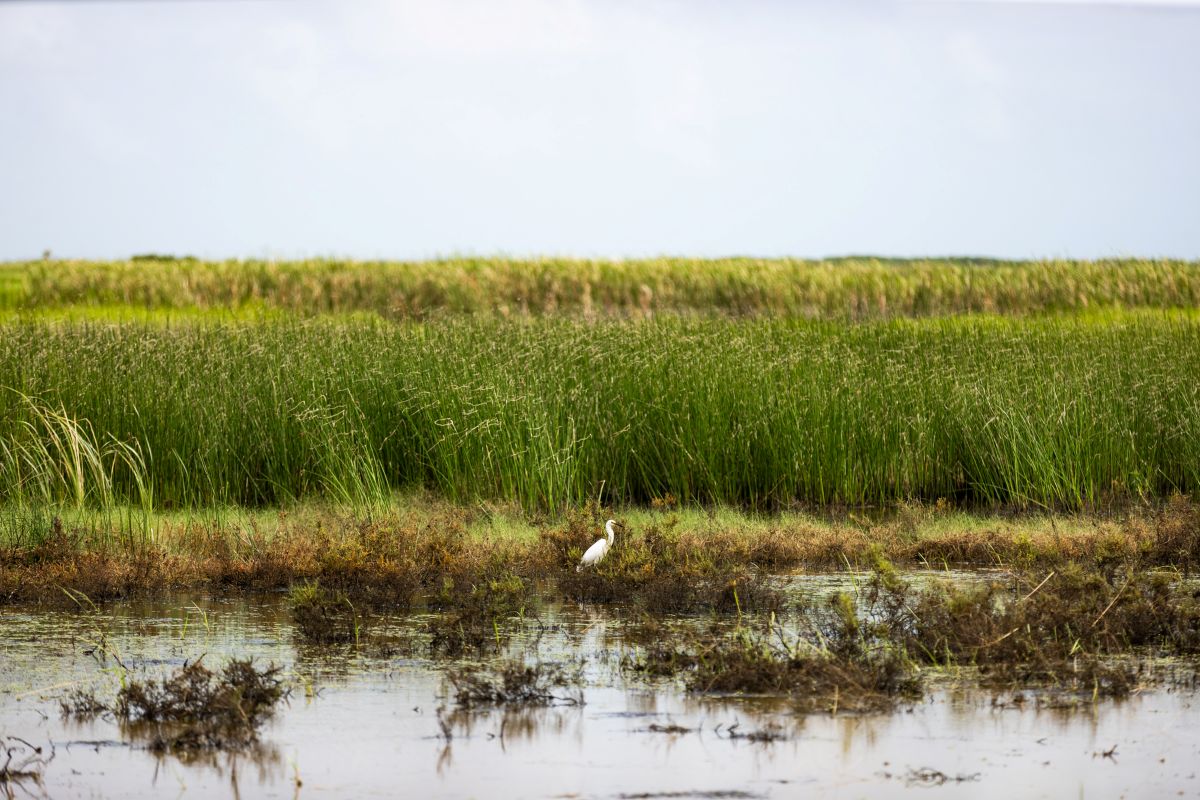Nature & Biodiversity
At Queensland Airports, we understand that our nature-related impacts, dependencies, risks and opportunities are location-specific. Therefore, we think about our nature-related activities by airport and by areas within and near to those airports.
The content on this page relates to the Commonwealth-lease areas of Gold Coast and Townsville Airports.
Image caption: Flora at Mount Isa Airport, open woodland and spinifex

Gold Coast Airport
Introduction
Gold Coast Airport and its immediate surrounds contain areas of both environmental and cultural value.
Parts of the airport have been modified from their natural condition through historical activities such as sandmining, timber harvesting and development of airport infrastructure.
Biodiversity
Areas of remnant vegetation remain:
- West of the Tugun Bypass (designated under the Gold Coast Airport Master Plan as a conservation area, known as the Cobaki Environmental Precinct)
- West of the primary runway
- The southeastern extent of the airport lease area
The remnant and regrowth vegetation at the airport represents a subset of coastal lowland vegetation and consists of several federal and state listed vegetation communities including Swamp Sclerophyll Forest, Coastal Saltmarsh and Lowland Rainforest.
Vegetation at the airport provides habitat for a variety of native species, including the wallum froglet (Crinia tinnula), wallum sedge frog (Litoria olongburensis) and common blossom bat (Syconycteris australis). There are also a number of waterways either on or proximate to the airport including the Cobaki Broadwater and Coolangatta Creek.
Our Initiatives
Gold Coast Airport has a number of nature-related initiatives in place.

Initiatives include:
- Designated conservation area under the Gold Coast Airport Master Plan, known as the Cobaki Environment Precinct. The Cobaki Environment Precinct is 94.5 hectares of land and water and represents c. 25% of the airport’s Commonwealth lease area. Many of the on-airport threatened flora and fauna species can be found in the Cobaki Environment Precinct. The Precinct facilitates wildlife movement, provides a physical vegetative buffer to the Cobaki Broadwater, and assists in maintaining biodiversity in the catchment
- Ongoing fauna monitoring
- Five-yearly vegetation condition assessments
- Biodiversity offsets in Northern New South Wales linked with relevant airport developments
- Specific maintenance and development procedures for works within or near listed vegetation community and/or species
For further details on Biodiversity and Habitat, please refer to the Gold Coast Airport Master Plan.
Townsville Airport
Introduction
The Civil Area of Townsville Airport is mostly a highly modified environment, characterised by sealed areas including aircraft aprons, carparks, roadways, buildings, landscaped gardens and previously cleared undeveloped land.

Biodiversity
There are 10.35 hectares of State-mapped wetland within the Civil Area, which is considered to be of general ecological significance. This State-mapped wetland is not considered to be environmentally significant in accordance with the Airports Act or Airports (Environmental Protection) Regulations.
A number of migratory birds have been recorded within the Civil Area, including the Fork-tailed Swift (Apus pacificus), Eastern Great Egret (Ardea modesta), Barn Swallow (Hirundo rustica), Rainbow Bee-eater (Merops ornatus) and Satin Flycatcher (Myiagra cyanoleuca). These species are not known to roost or breed on the Airport site, but periodically use this area for foraging.

Areas of environmental significance exist in the surrounding vicinity of the Civil Area, including the Townsville Town Common to the north and Great Barrier Reef Marine Park and World Heritage Area to the east. The Townsville Town Common is within five kilometres of the Civil Area and is home to 66 threatened and migratory bird species, four threatened mammal species and four threatened reptiles (Queensland Government 2022).
Our Initiatives
Townsville Airport has a number of nature-based management features:
- The internal drainage network within the Civil Area of Townsville Airport flows away from the Townsville Town Common and through a network of constructed channels and creeks, eventually flowing into Rowes Bay; part of the Great Barrier Reef Marine Park and World Heritage Area
- Biodiversity impacts are assessed for relevant developments to inform approvals and mitigation requirements
- Airside monitoring of wildlife is conducted daily, in accordance with our Wildlife Hazard Management Plan
- Landscaping and maintenance procedures are in place that promote using local endemic species and avoid bird attracting species
- Potential lighting impacts on fauna are considered in the planning and design of new developments
For further details on Biodiversity and Habitat, please refer to the Townsville Airport Master Plan.